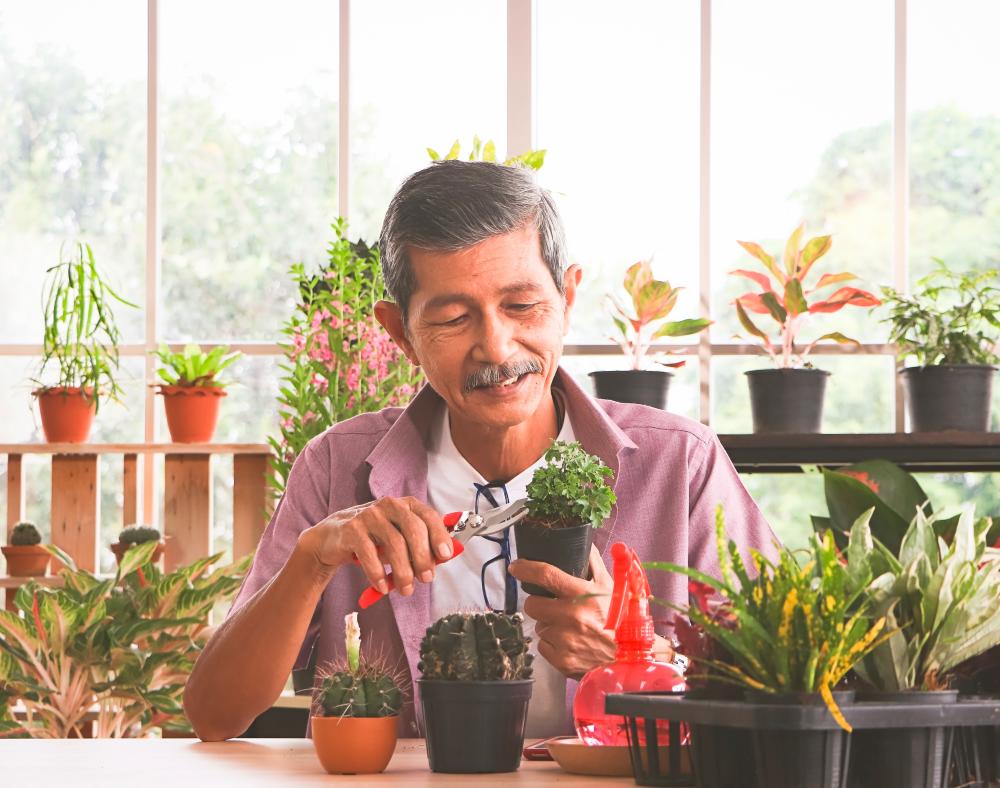HAVING plants in your home is a sure way to freshen up your surroundings. Having plenty of indoor flora and fauna can elevate and brighten up a space with its natural aura, transforming your home into a lush paradise.
Regardless of gardening experience, caring for houseplants is a blend of art and science. Here are some useful tips on how to keep your indoor greenery happy and healthy.
Know your plants
First things first, different plants have different needs. Your cactus is not going to need the same care as your fern. Take a few minutes to read up on each specific plant. A quick search online can tell you where they are from, what kind of light is required, and how often they need water. Understanding these basics is the first step to enjoying this hobby.
Let there be light
Imagine being stuck in a dark room all day when you love the sun – does not sound fun, right? Plants feel the same. Light is crucial, but not all plants want the same amount. Sun lovers like cacti and succulents thrive in bright, direct light, so a sunny windowsill is perfect.
Medium-light plants, like the ever-popular pothos, do well in bright but indirect light, which means a spot a few feet away from the window is ideal. Low-light plants, such as snake plants and Zanzibar Gem (ZZ) plants, are great for shadier spots. They are like the introverts of the plant world, quite happy to exist in the shade away from the spotlight.
Water wisely
Over watering is the number one killer of houseplants. It is so tempting to water on a schedule, but plants have their own rhythms. To avoid drowning your green friends, check the soil by sticking your finger about an inch into it. If it is dry, it is time to water; if it is still moist, hold off.
Knowing the signs can help too. Wilting can mean over or under-watering. Crispy, brown leaves usually do not have enough water, while yellowing, mushy leaves often indicate too much.
Humidity helps
Many houseplants, especially tropical ones, appreciate a little extra humidity. This does not mean you need to turn your home into a sauna. A light misting can help, but avoid soaking the leaves. Grouping plants creates a micro-environment and boosts humidity.
You can also use a tray of water and pebbles: place your pots on the tray, ensuring the bottoms are above water level. As the water evaporates, it adds humidity around the plants.
Prune and propagate
Just like a haircut, plants benefit from occasional trimming. Remove dead or yellowing leaves to help the plant focus energy on new growth. Pinching back leggy stems encourages bushier growth. Many plants, like pothos, philodendrons and succulents, are easy to propagate. Snip a healthy stem, place it in water or soil and watch the roots grow. It is like getting free plants!
Re-pot when needed
Remember plants can outgrow their homes. If roots are peeking out of the drainage holes, it is time for a bigger pot. Choose a pot that is one size larger – not too big, or you risk over watering – and make sure it has drainage holes. New soil means new nutrients, so gently shake off the old soil and repot with fresh mix.
Pest patrol
Last but not least, keep an eye out for common houseplant pests like aphids, spider mites and mealybugs. Regularly inspect your plants, looking under leaves and around stems. If you spot pests, treat them promptly by wiping down leaves with soapy water or using insecticidal soap.
Caring for houseplants is a rewarding hobby. It is about paying attention, being patient and a little bit of experimentation. Not every plant will thrive, and that is okay. Learn from each green friend, and soon you will have a thriving indoor garden.
Flex that green thumb and happy gardening!









